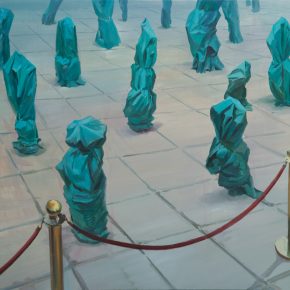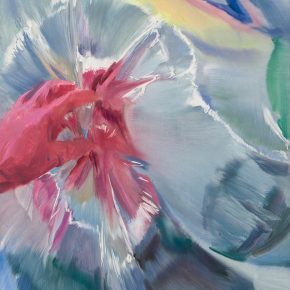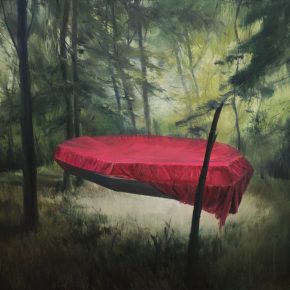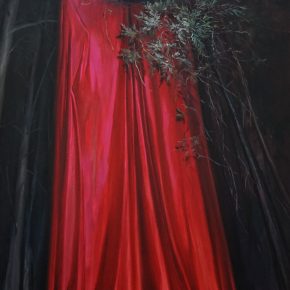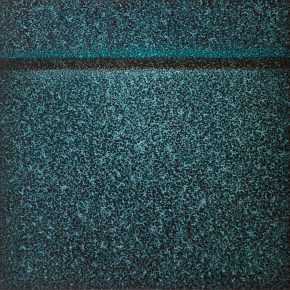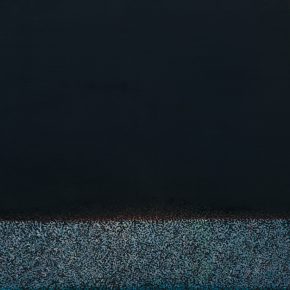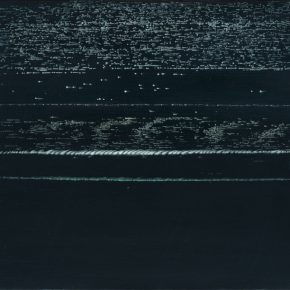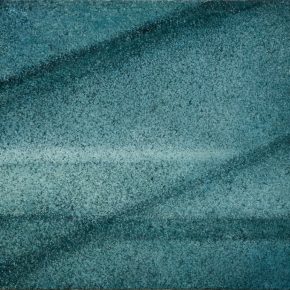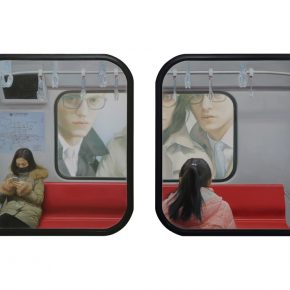
If relying on the mode of visual experience, the information captured by one’s eyes usually solidifies his subjective thinking and makes him hold onto the theory that “seeing is believing” as truth. And in A Dream of Red Mansions, the antithetical couplet of “Truth becomes fiction when the fiction’s true; Real becomes not-real where the unreal is real” might imply another truth, whether seeing is believing? Where does the reality start? From an artistic point of view, early classical portraits and landscape paintings have become evidence for later generations to learn about history, but the “accuracy of realism” has been repeatedly questioned. The repeated iterations of technology conform to the changes over generations. It breaks the “reality” that is often regarded as the most sublime, and expands the observation and thinking of artists into multiple dimensions. As Gombrich said, “The new methods and discoveries in art are never the ultimate goal; artists always use different methods and discoveries to bring about the significance of the subject matter closer to our hearts.”
“Seeing Is Believing”—The Third Round of CAI Young Artists Laboratory was officially opened at FEEFAN’S ART on the afternoon of March 15, 2019. The exhibition was hosted by the CAFA ART INFO of the Central Academy of Fine Arts. The Editorial Department of the Central Academy of Fine Arts provided academic support. Zhang Yanzi, Executive Editor of CAFA ART INFO served as the Academic Chair. Zhu Li, Chief Editor of the CAFA ART INFO (CN) curated the exhibition, which showcases the works by three young artists Cao Kuo, Xu Zaizhou and Shi Chengdong. These three young people have different creative languages, but they have been “focusing on reality” in common. Through the theme of “seeing is believing”, this exhibition introduces the study of realistic style painting and tentatively discusses “the spirituality of visual images”. At the same time, the diversified characteristics reflected by the three contemporary young artists provide a paradigm for us to understand the thinking and creative path of the young art community.
“Seeing is believing, first of all is a rhetorical question. There is a saying that ‘Words are but wind, but seeing is believing’. But is what you see real? Undoubtedly, it is not necessarily the case,” said curator Zhu Li. The combination of reality and illusion is often interdependent and mutually transforming, and from time to time it has an impact on the solidified thinking, triggering reflections of people. What the eyes see may not be true, or does it really exist from the perspective of skepticism? Does “truth” realistically exist? Is “nothingness” just a fantasy of the human brain? Based on this philosophical thinking, the exhibition presents a multi-faceted and unique “spiritual exploration” for the audience from the works of “figurative painting” that the three young artists have always been dedicated to.
The exhibition is divided into three small sections. After entering the exhibition hall, young artist Cao Kuo conducts his “inquiring” explorations centered around two series of Specimen and Fossil. His delicate painting language and stable visual effect conveyed an intuitive feeling through his images. Currently Cao Kuo is involved in his third year of postgraduate study at the Fourth Studio of the Department of Oil Painting at the Central Academy of Fine Arts, and he has developed a great interest in objects such as stones, gloves, and specimens from the third year of his undergraduate study. He has always insisted on the sketching in his paintings, while emphasizing “painting is different from the subjective feeling of photography.” The super-realistic figurative style may bring a misunderstanding. If you look within the standard of meticulous “photo,” you may lose the true feelings hidden behind the picture. For example, in the subject matter of several specimens of Inquiry, Untitled and Duck Ass, the meticulous animal feathers, the calming classical gray tone, and the vivid texture attract people to stop, but they will inevitably fall into the trap after they extract from the images. Suddenly they find this was originally something that has no sign of life. Behind the efforts to portray the “figurative” is Cao Kuo’s comprehension of time, life, and reality. The contrast between this “alive and dying” is even more pronounced in the Fossil series. These traces branded with ages are woven and conveyed to the audience through smooth painting techniques, but Cao expressed that “the feeling of painting is more important than skills.”
Being figurative or abstract is itself a contradictory community. The transmission of artistic spirit through the expression of visual language may be the feeling he has been searching for. As Cao Kuo frankly stated, “In my painting process, I feel that I have achieved a sense of reality when I am able to create an image that was close to reality. But at the moment, the realism of the object seems to be a step away from me. What I can do is just to continue to draw and chase, it is like I cannot catch up with it, but when I stop and I feel that it is finished, I do not need to draw any more. This is the same as chasing our shadow. When one runs, his shadow also runs, thus he can never catch up with it. When one stops, his shadow stops at his feet." Academic Chair Zhang Yanzi talked about Cao Kuo as she thought that Cao Kuo had a feeling similar to “ancient literati”, which was linked to the spirituality of painting by depicting the packaged specimens and behaviors, wasn’t such “an inquiry” becoming “a self-reflection”?
In Kandinsky’s On the Spirit of Art, “the more abstract the shape is, the clearer and more direct it appeals.” On the opposite side of the “Inquiry” are the works by another young artist Xu Zaizhou. He elaborated on his sub-theme “Being Invisible to Reality” with two seemingly opposite pictures. Two purely realistic works of To Pingguoyuan and To Sihuidong belong to his graduation works for his postgraduate study in 2016, which recorded the daily commute on the subway for a period of time. His exhibition uses a collection of window frames and warning tape to present a cinematic narrative style. However, many viewers have noticed that his other series of Snow Screen can be said to be the most “abstract” within the entire exhibition. Perhaps as Kandinsky said, the abstract infection is inexplicably full of attraction—the layered dense star points and the different combinations between them create a vivid visual effect, his earliest pieces of Snowflakes (201601, 201801), at first glance, unconsciously reminded us of the sentence of Ihab Hassan, “Many people do not know, our plowed soil is composed of stars; drifting with the wind everywhere; and in a cup of rain, we drink the universe." (Kurt Stage, Poetic Atom). But the artist also revealed, “This actually starts from a figurative reality.” Although the images are abstract, the inspiration comes from the “electronic flash screen signal barrier”, which is a pleasant surprise—he conveys an abstract meaning with the academic realistic representation, the opposite of which is subtly dispelled in multiple exchanges. This style of expression and poetic portrayal are similar to the creation, depicting infinite, inexpressible meanings with limited expressed words.
“Abstract” is a comparison with double quotes here. The change with this kind of steering is consistent with Xu Zaizhou. “From the subway window to the snow screen, there is indeed a big difference in appearance. But there is no fundamental change in the two series of motifs.” The relationship between reality and non-reality, watching and being watched is sublimated in the “mirroring” view of the audience standing in front of the work—the empty eyes in the “Metro Window”, transparent handles, eye-catching advertisements and even flashing electronic screens. They have become the most special “product” of this era, and a harmonious resonance between the point of aggregation in Snow Screen and the “field” composed of countless points, is it not a metaphor of the relationship between “smallness and grandness”? The keen sense, the observing mode and the realism of the young artists are gathered in the spotlights, both real and imaginary, deep or shallow, drawn away from reality, condensed into fine points, swayed into snowflakes, and settled into the universe.
Inside the exhibition hall, young artist Shi Chengdong showed a dramatic tension with the “Spacial Metaphor of Wander”—the distinctly cut frames and the folded “l(fā)andscape” corners all show this trait. His works in the past three or four years include three series of Surface, Re-screen and Field. The Surface series is the introduction to the other two branches, through objects with mirror characteristics such as reflective fabric and aluminum film, it shows a dialogue between “l(fā)ight and matter”, they are either intimate, or dissociating. In his own words, “it captures the status quo of people in current society by capturing this state of detachment.” Shi Chengdong received multiple influences in his creations, such as the use of a special space by film director Hitchcock in his thrilling films, and the concept of “separation distance” in Japanese aesthetic consciousness, which also opens up a different interpretation for us. The possibility is that the viewer is in the drama, when he looks at the whole world from an inconspicuous position, it means that “here” can symbolize the entire universe after being condensed. As an extension, the Field series pushes the lens of the picture to a more spacious space, such as in the Green Sculpture, The Sky, Energy Field, the column wrapped by the green cloth, a piece of the red giant screen and the huge volume of tape measure are all “actors”. They are combined with daily inconspicuous fences, gloomy trees, and confined spaces to form a specific background for the story. The scenes of imagination appear to remind the audience: ridiculous reality and symbolic drama, which is more realistic?
This is reminiscent of Kant’s reference to the “aesthetic concept,” “The product of imagination can lead to a lot of thinking, but there is no determined idea, no concept can fit it, so no language can completely convey it so that people can understand.” This kind of imagination opens the mind to “a vision that is invisible to the general vision.” In the images of Shi Chengdong’s works, or in the scripts he set, the inspiration from transcending reality is obtained from the daily visual common perspective of the general audience, but by using an unusual imagination it is possible to open up another reality-based observation, it is either true or false, illusory and real, and how the show is rehearsed, and spectators have their own sets.
Instead of treating this exhibition as a result of “solving the truth”, it is better to interpret it as a process of “finding the answer”. The three young artists Cao Kuo, Xu Zaizhou and Shi Chengdong conveyed their understanding of the theme on “seeing is believing” in different observing modes and expressions. As Academic Chair Zhang Yanzi said, “Transferring the things outside of realism in a realistic way might be what we explore.” The practice and creation of the three artists also reflect the positive attitudes of young students in exploring reality and seeking thoughts. Curator Zhu Li expressed this, “We can see that realistic or figurative techniques as a coat or a representation, like other forms of creation, also belong to a way of comprehending the world.” Mind and foreign objects, existence and nothingness, ethereal and practical, each group of binary opposition in different contexts of interaction, collision and fusion, solving, seeking in the life cycle of objects, confronting with the settled modes of the visual experience and forms, a voice seems to be asking in a low voice: Is it true that seeing is believing?
The exhibition will remain on view till April 5.
Text by Zhang Yizhi, translated and edited by Sue/CAFA ART INFO
Photo by Yang Yanyuan and Hu Sichen/CAFA ART INFO
Photo Courtesy of the Artists


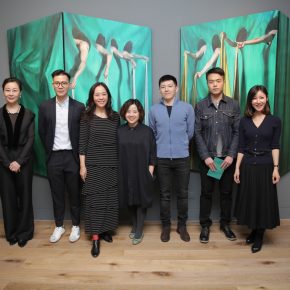
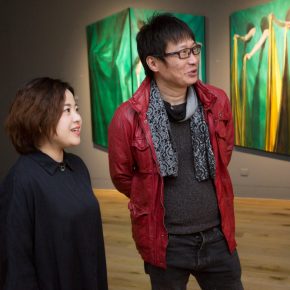
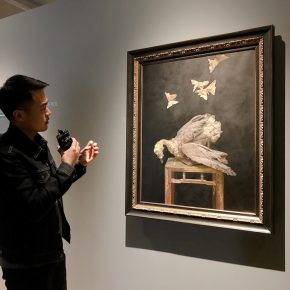
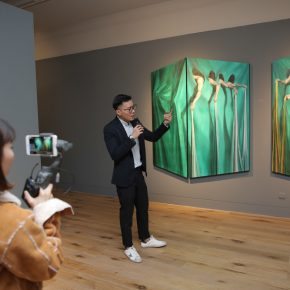
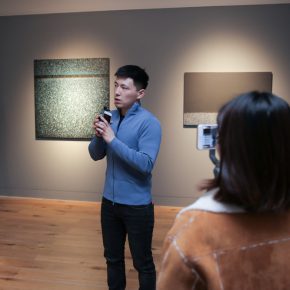
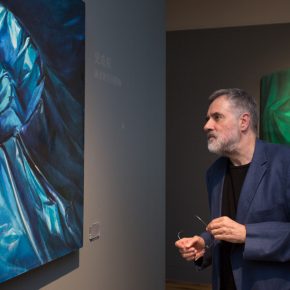

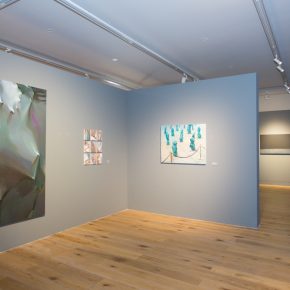


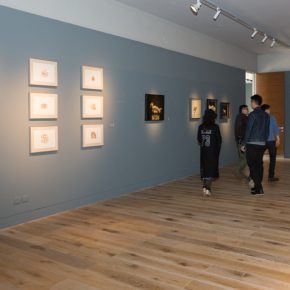

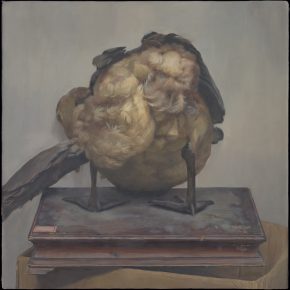
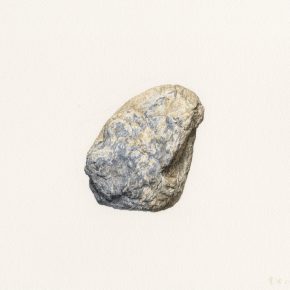


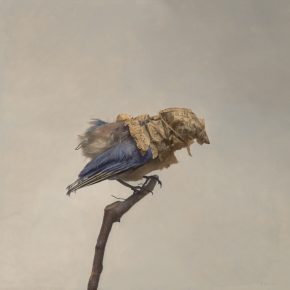
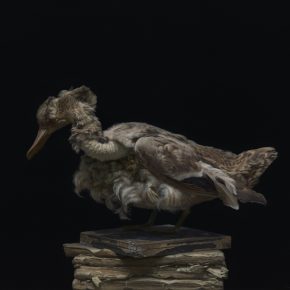
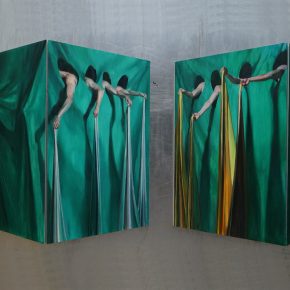
-2019-Oi-on-board-65.5cm×53cm×2-290x290.jpg)
